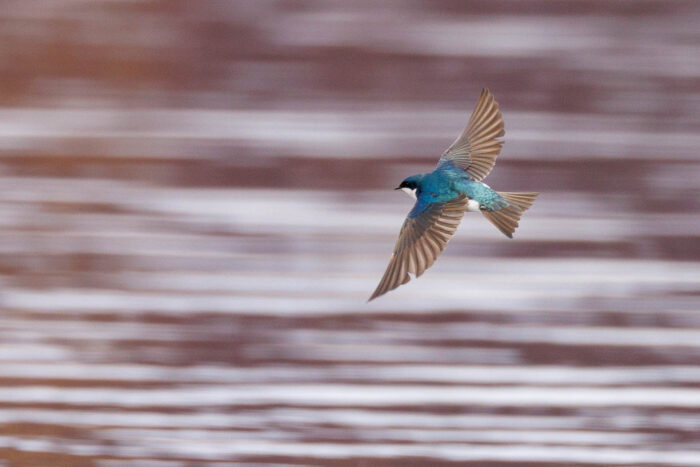Tree Swallow
Tachycineta bicolor
With a heavy diet of insects, tree swallows are a great bird for pest control.
This section shows one large critter image at a time. Use the thumbnails that follow to select a specific image to display here.

This gallery contains a grid of small thumbnails. Selecting a thumbnail will change the main image in the preceding section.
Appearance
Males have an iridescent green-blue back, head and wings with a white underbelly and throat. Females are similar in appearance but have duller colors—typically gray-brown or gray-blue. The bird has a forked tail.
Feeding
Tree swallows are skilled hunters and eat large quantities of insects. They are great for pest control on farms and in gardens.
Flight
Tree swallows are highly acrobatic and great flyers. They are streamlined birds, which means their entire body is covered with contour feathers which reduces drag or air resistance.
Voice
Tree swallows make a variety of calls; they buzz, chirp, trill and whistle.
Reproduction and life cycle
Tree swallows are one of the first birds to migrate north when spring starts. They make their nests in tree cavities. They don’t make their own cavities and often take holes left from woodpeckers or holes in dead and dying trees. They also nest in man-made birdhouses.
Females typically lay four to seven eggs and incubate them for 11 to 20 days. Most eggs hatch within 14 to 15 days.
Did you know?
Tree swallows are great to have around farms and gardens for pest control.
Tree swallows used to nest in wooden poles but aren’t able to make nests in metal poles that are most commonly used these days.
You can help tree swallows by building bird houses where they can nest.
Sources and additional information
Attracting the Beneficial Tree Swallow - Maryland Cooperative Extension
Tree Swallow - Cornell Lab
Tree Swallow - Audubon
